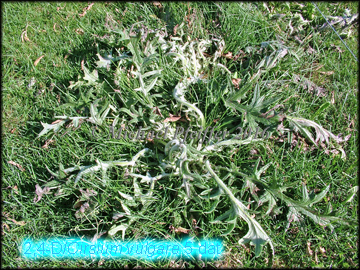
click for a larger image
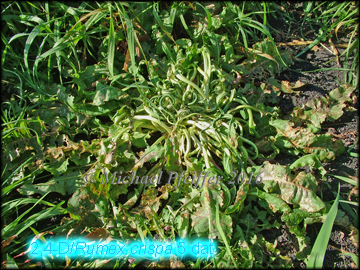
click for a larger image
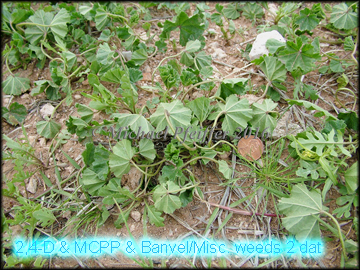
click for a larger image
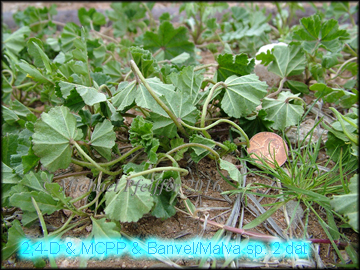
click for a larger image
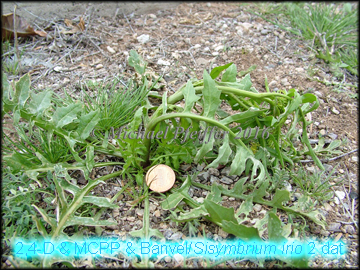
click for a larger image
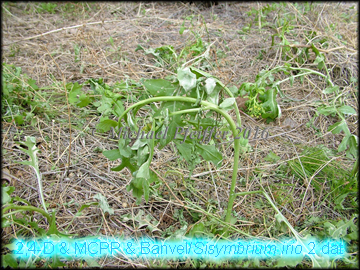
click for a larger image
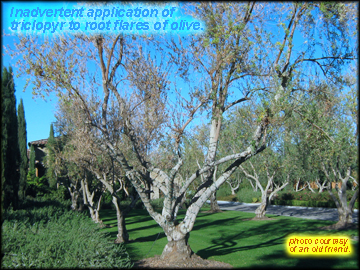
click for a larger image
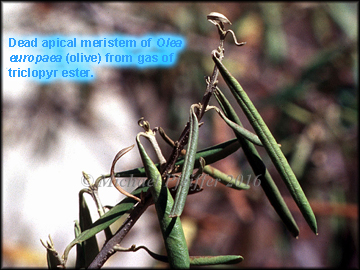
click for a larger image
| Growth Regulators |
| Herbicides which act as growth regulators are in four main groups: benzoic acid compounds such as dicamba, phenoxy compounds such as 2,4-D and mecoprop, pyridines such as aminoclyclopyrachlor and picloram and the quinoline compounds represented by quinclorac. These herbicides are foliar applied to weeds post emergence however some, especially the pyridine herbicides have root uptake as well. Selectivity varies between compounds but most are more active on dicots than monocots. Growth regulator herbicides mimic the natural growth regulatory compounds in plants: indole-3-acetic acid and indole-3-butyric acid. Uptake of these herbicides by plants results in uncontrolled growth which disrupt many biological processes leading to death of targeted plant(s). |
| Symptoms on plants includes downward twisting of petioles, wilting, leaf drop, stunting, yellowing of foliage, death of growing points, cracks in the bark of woody plants, leaves may appear crinkled/rough, cupped, strapped and have pointed tips. Fruit may be misshapen and maturity of plants and fruits delayed. |
| Photographs by Dr. Michael Pfeiffer |

click for a larger image |

click for a larger image |
|

click for a larger image |

click for a larger image |
|

click for a larger image |

click for a larger image |
|

click for a larger image |

click for a larger image |